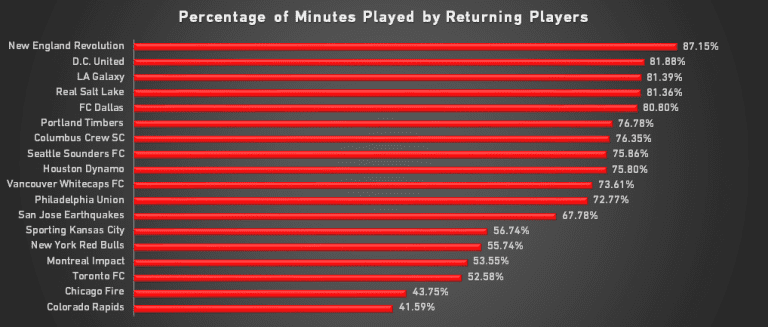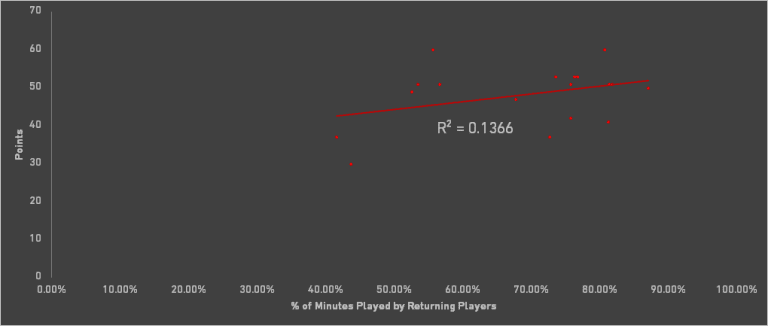The 2015 MLS season is over. It was a whole lot of fun, but as of last night, it's in the past.
That means It is now time to look ahead to the 2016 season and what your team can do to bring home the MLS Cup.
Almost every team has already revealed the players they are bringing back and which ones they are letting go from the 2015 season. Most teams kept around 20 players, hoping they are the core to build around for next season. Some are still negotiating with players whose contracts called for high salaries, hoping to bring them back at a lower number.
But does having a high percentage of minutes played by players that were on your team the year before mean you will be a contender? There is no definitive answer, but we can look at some data from this season for some hints.
Of the eight teams that had the highest percentage of minutes played by players who were on their respective teams in 2014, seven made the playoffs in 2015.

The New England Revolution saw 87.15 percent of their 2015 minutes played by players who were on the team in 2014, by far the highest percentage.
You will also notice that the two teams on the bottom of the list, the Chicago Fire and Colorado Rapids, had the two worst records in the league.
- ALL TRANSACTIONS: Who's in and who's out for 2016?
There is definitely some correlation between retaining players and succeeding, as you can see in the scatter plot below. You can also see an R-squared symbol. That number is a statistical measure that show how close the data are to the fitted regression line. The higher the R-squared, the better the model fits. In this case we are evaluating how important returning players were to collecting points in MLS this season.

The R-squared number of .1366 is not high at all (it can go all the way up to 1), but it does show there was some kind of relationship between success and returning players from the 2014 season.
Yet there is one big point to be made here that we have yet to discuss: Correlation does not imply causation.
Just because there is some correlation between these two things does not mean that teams should carry all their players from this season into next season. There are other factors at play here.
Are teams good because they retain their players? Or do teams retain their players because they’re good? Those are questions that will be left unanswered here. The answers are probably different in each particular case.
It’s also important to note that teams have different objectives and expectations. A team playing in the CONCACAF Champions League quarterfinals in February, for example, might want to return a higher percentage of their players so they can be prepared for those early-season games.
Bringing in external players, even non-Designated Players, can still benefit a team tremendously. After all, having players like Sacha Kljestan, Felipe and Mike Grella contribute starters' minutes this year didn’t exactly hurt the New York Red Bulls.
So we’re officially in the MLS silly season. How will your team handle it?










